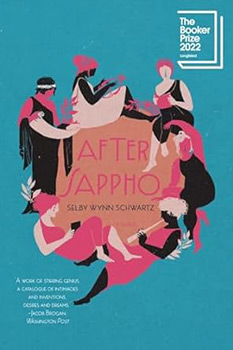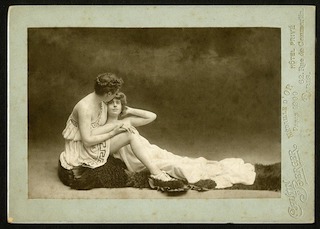Summary | Excerpt | Reviews | Beyond the Book | Read-Alikes | Genres & Themes | Author Bio

A Novel
by Selby Wynn SchwartzThis article relates to After Sappho
 Selby Wynn Schwartz's debut novel After Sappho reimagines the lives of early 20th century lesbian authors and artists. The novel tells the story of how these women ignited a radical feminist movement inspired by the ancient Greek poet Sappho, broke free from conventions to pursue their own desires and creativity, and flourished within their own women-only communities. In her 1907 work Comment les femmes deviennent écrivains (How Women Become Writers), the French writer Aurel, who ran her own literary salon from 1915 until her death in 1948, stated her belief that women should not follow the rules for writing that had been laid down by men. "It was time for women to take language for themselves, Aurel said, even one word at a time, to take their own names and become. To become one word."
Selby Wynn Schwartz's debut novel After Sappho reimagines the lives of early 20th century lesbian authors and artists. The novel tells the story of how these women ignited a radical feminist movement inspired by the ancient Greek poet Sappho, broke free from conventions to pursue their own desires and creativity, and flourished within their own women-only communities. In her 1907 work Comment les femmes deviennent écrivains (How Women Become Writers), the French writer Aurel, who ran her own literary salon from 1915 until her death in 1948, stated her belief that women should not follow the rules for writing that had been laid down by men. "It was time for women to take language for themselves, Aurel said, even one word at a time, to take their own names and become. To become one word."
The emergence of a new kind of literature written by women in this period did not go unnoticed and was often received with hostility. In 1905, the English writer Virginia Woolf published a review refuting the conclusions of W. L. Courtney's The Feminine Note in Fiction, in which Courtney claimed, among other things, that women's attention to detail precluded them from becoming artists and that, by writing books for other women, women authors placed the art of the novel in jeopardy. To counter these assertions, Woolf presented Sappho and Jane Austen as evidence that women could combine what Courtney called their passion for "exquisite detail" with supreme artistry. Woolf also pointed out that women had only recently won access to education and the study of Latin and Greek classics and, given time, women would "fashion it [their literature] into permanent artistic shape."
By 1905, this revolutionary reshaping of literature by women was already under way. A central figure of this new movement and a key character in After Sappho is the American writer Natalie Barney, whose work and life was inspired by Sappho. As one of the first modern women to write openly lesbian poetry, in 1901 Barney (under the pseudonym Tryphé) published Cinq Petits Dialogues Grecs (Five Short Greek Dialogues) about her lover Renée Vivien, herself the first lesbian translator of Sappho's poetry. Vivien wrote the poem The Death of Sappho shortly before her own untimely death in 1909. The French writer Colette, another of Barney's lovers, recounted Vivien's story in her acclaimed 1932 novel The Pure and the Impure.
Many other figures in After Sappho are connected through their association with Barney. The dancer and courtesan Liane de Pougy recounted their romance in her 1901 novel Idylle Saphique, while English author Radclyffe Hall gave a celebrated reading of her 1928 novel The Well of Loneliness at Barney's salon, not long after the book had been banned in the UK for its depiction of lesbianism. At the same time, in England, after her scathing response to Courtney, Virginia Woolf had embarked upon a relationship with the writer Vita Sackville-West, a romance that led to the writing of her 1928 novel Orlando: A Biography. The novel's protagonist, based on Sackville-West, lives for more than 400 years and metamorphoses from a man into a woman, implying that love transcends all boundaries of sex and convention.
As the 1920s drew to a close, Aurel's hopes that women writers would discard the old rules and take on their own language were being fulfilled. This new kind of literature built a foundation for the extraordinary wealth of women's literature we enjoy today.
Natalie Barney and Colette, c. 1906, photo by Cautin and Berger, Paris, from Smithsonian Institution, Alice Pike Barney Papers
Filed under People, Eras & Events
![]() This "beyond the book article" relates to After Sappho. It originally ran in January 2023 and has been updated for the
January 2024 paperback edition.
Go to magazine.
This "beyond the book article" relates to After Sappho. It originally ran in January 2023 and has been updated for the
January 2024 paperback edition.
Go to magazine.
Your guide toexceptional books
BookBrowse seeks out and recommends the best in contemporary fiction and nonfiction—books that not only engage and entertain but also deepen our understanding of ourselves and the world around us.